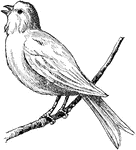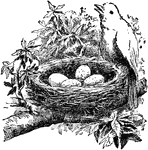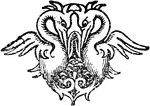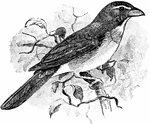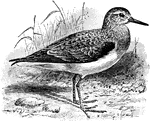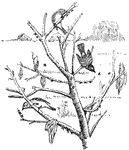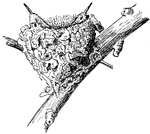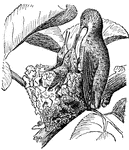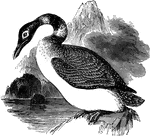
Great Northern Diver
The great northern diver or common loon is a large member of the family, Gaviidae.
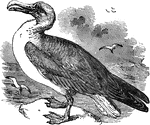
Wandering Albatross
The wandering albatross (Diomedea exulans) is a seabird with the largest wingspan of any living bird.

Man and child
An illustration with a man and a child watching birds fly overhead while standing on a rock.

Vulture
Vultures are the scavengers of the Amazon, and are never killed by the people. They are quite tame,…
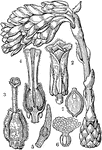
Dutchman's Pipe
"Monotropa Hypopithys. 2. a flower; 3. a pistil; 4. the same divided perpendicularly; 5. a seed; 6.…

White Pelican
The White Pelican, Pelecanus onocrotalus also known as the Eastern White Pelican or Great White Pelican…

Brown Pelican and Sea Gull
An illustration of a brown pelican with a fish in it's mouth and a sea gull resting on his back. The…
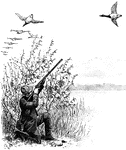
Geese Hunting
An illustration of a man on one knee preparing to shoot a geese that is flying overhead.
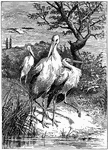
Egrets
An egret is any of several herons, most of which are white or buff, and several of which develop fine…
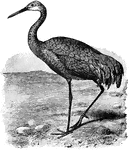
Sandhill Crane
Common in Florida, the sandhill crane (Grus canadensis) is a large bird with a wingspan of up to seven…
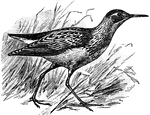
Pectoral Sandpiper
The pectoral sandpiper, Calidris melanotos (or Actodromas maculata) is a small wading bird of the Scolopacidae…
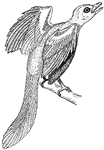
Archaeopteryx
Archaeopteryx, sometimes referred to by its German name Urvogel ("original bird" or "first bird"), is…
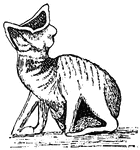
Cedar Waxwing Hatchling
The Cedar Waxwing (Bombycilla cedrorum) is a member of the family Bombycillidae or waxwing family of…
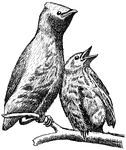
Cedar Waxwing (3 Weeks)
The Cedar Waxwing (Bombycilla cedrorum) is a member of the family Bombycillidae or waxwing family of…
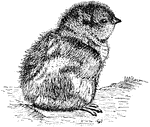
Young Grouse
Grouse are a group of birds from the order Galliformes. Often considered a family Tetraonidae, the American…

Young Woodcock
The woodcocks are a group of seven extant very similar wading bird species in the genus Scolopax, characterised…
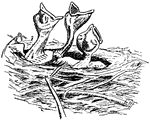
Young American Robins
The American Robin, Turdus migratorius, is a migratory songbird of the thrush family. It is named after…
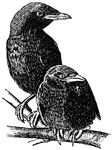
Crows
The true crows are large passerine birds that comprise the genus Corvus in the family Corvidae. Ranging…

Yellow-throated Vireo
The Yellow-throated Vireo, Vireo flavifrons, is a small American songbird. Adults are mainly olive on…
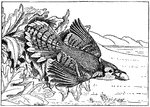
Blue Jay
The Blue Jay (Cyanocitta cristata) is a passerine bird, and a member of the family Corvidae native to…

Ruffed Grouse
The Ruffed Grouse, Bonasa umbellus, is a medium-sized grouse occurring in forests from the Appalachian…

Woodpecker
The woodpeckers, piculets and wrynecks are a family, Picidae, of near-passerine birds . Members of this…
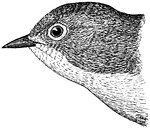
Nashville Warbler
The Nashville Warbler, Vermivora ruficapilla, is a small songbird in the New World warbler family. They…

Wood Thrush
The Wood Thrush, Hylocichla mustelina, is a North American passerine bird. It is closely related to…
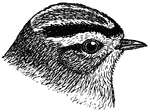
Golden-crowned Kinglet
The Golden-crowned Kinglet, Regulus satrapa, is a very small songbird. Adults are olive-gray on the…

Tit Bird
The tits, chickadees, and titmice comprise Paridae, a large family of small passerine birds which occur…

White-breasted Nuthatch
The White-breasted Nuthatch (Sitta carolinensis) is a small songbird of the nuthatch family which breeds…
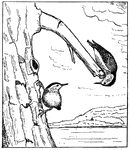
Nuthatches
The nuthatches are a genus, Sitta, of small passerine birds belonging to the family Sittidae. Characterised…
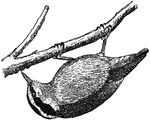
Red-breasted Nuthatch
The Red-breasted Nuthatch, Sitta canadensis, is a small songbird. Adults have blue-grey upperparts with…
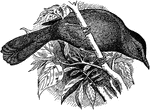
Gray Catbird
The Grey Catbird (Dumetella carolinensis) is a medium-sized northern American perching bird of the mimid…

Yellow-throat Vireo
The Yellow-throated Vireo, Vireo flavifrons, is a small American songbird. Adults are mainly olive on…
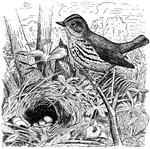
Ovenbird
The Ovenbird, Seiurus aurocapillus, is a small songbird of the New World warbler family. Ovenbirds are…
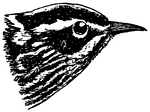
Black and White Warbler
The Black-and-white Warbler, Mniotilta varia, is a small New World warbler. It breeds in northern and…
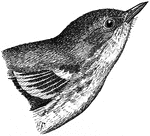
Pine Warbler
The Pine Warbler, Dendroica pinus, is a small songbird of the New World warbler family. These birds…
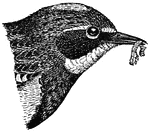
Myrtle Warbler
The Myrtle Warbler, Dendroica coronata coronata, is a small New World warbler. This passerine bird was…

Red-eyed Vireo
The Red-eyed Vireo, Vireo olivaceus, is a small American songbird, 13-14 cm in length. It is somewhat…
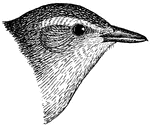
Warbling Vireo
The Warbling Vireo, Vireo gilvus, is a small songbird. Adults are 12 cm long and weigh 12 g. They are…

Yellow-throated Vireo
The Yellow-throated Vireo, Vireo flavifrons, is a small American songbird. Adults are mainly olive on…

Rose-breasted Grosbeak (Male)
The Rose-breasted Grosbeak, Pheucticus ludovicianus, is a large seed-eating bird in the cardinal family.…

Rose-breasted Grosbeak (Female)
The Rose-breasted Grosbeak, Pheucticus ludovicianus, is a large seed-eating bird in the cardinal family.…
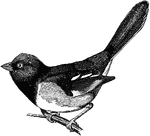
Towhee (Male)
A Towhee is any one of a number of species of birds in the genus Pipilo within the family Emberizidae…

American Goldfinch
The American Goldfinch (Carduelis tristis), also known as the Eastern Goldfinch and Wild Canary, is…
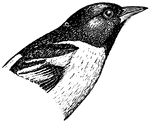
Baltimore Oriole
The Baltimore Oriole, Icterus galbula, is a small icterid blackbird which is on average 18 cm long and…

Western Wood Pewee
The Western Wood-Pewee, Contopus sordidulus, is a small tyrant flycatcher. Adults are gray-olive on…
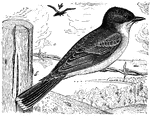
Kingbird
The genus Tyrannus is a group of large insect-eating birds in the Tyrant flycatcher family Tyrannidae.…
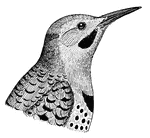
Northern Flicker
The Northern Flicker (Colaptes auratus) is a medium-sized member of the woodpecker family. It is native…
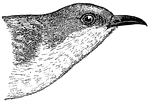
Black-billed Cuckoo
The Black-billed Cuckoo, Coccyzus erythropthalmus, is a cuckoo. Adults have a long brown tail and a…

American Robin
The American Robin, Turdus migratorius, is a migratory songbird of the thrush family. It is named after…


